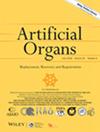Extracorporeal liver support systems in patients with acute-on-chronic liver failure: An updated systematic review and meta-analysis
Abstract
Background
The utilization of extracorporeal liver support systems is increasingly prevalent for the management of acute-on-chronic liver failure in clinical settings. Yet, the efficacy of these interventions in terms of tangible clinical benefits for patients remains a matter of debate, underscoring the need for meta-analysis.
Methods
An updated meta-analysis was performed to elucidate the relationship between the application of extracorporeal liver support versus standard pharmacological treatment and the prognostic endpoints of patient survival, specifically assessing 1-month and 3-month mortality rates, as well as the incidence of complications such as hepatic encephalopathy, spontaneous bacterial peritonitis, and hepatorenal syndrome. Literature were searched via PubMed, EMBASE, and Web of Science.
Results
The meta-analysis revealed the following: the odds ratio for 1-month mortality was 0.63 (95% confidence interval [CIs]: 0.51–0.76), for 3-month mortality was 0.70 (95% CI: 0.61–0.81), for hepatic encephalopathy was 0.81 (95% CI: 0.67–0.97), for spontaneous bacterial peritonitis was 0.66 (95% CI: 0.44–0.99), and for hepatorenal syndrome was 0.68 (95% CI: 0.51–0.92). These results suggest that patients with acute-on-chronic liver failure undergoing extracorporeal liver support system therapy have significantly better survival rates and lower complication incidences compared to those receiving conventional drug therapy. Further subgroup analysis indicated that patients with lower model for end-stage liver disease (MELD) scores and reduced total bilirubin (Tbil) levels demonstrated greater benefits from extracorporeal hepatic support.
Conclusion
This study establishes that in the management of acute-on-chronic liver failure, extracorporeal liver support systems confer a survival advantage and reduce complications relative to standard pharmacotherapy.


 求助内容:
求助内容: 应助结果提醒方式:
应助结果提醒方式:


